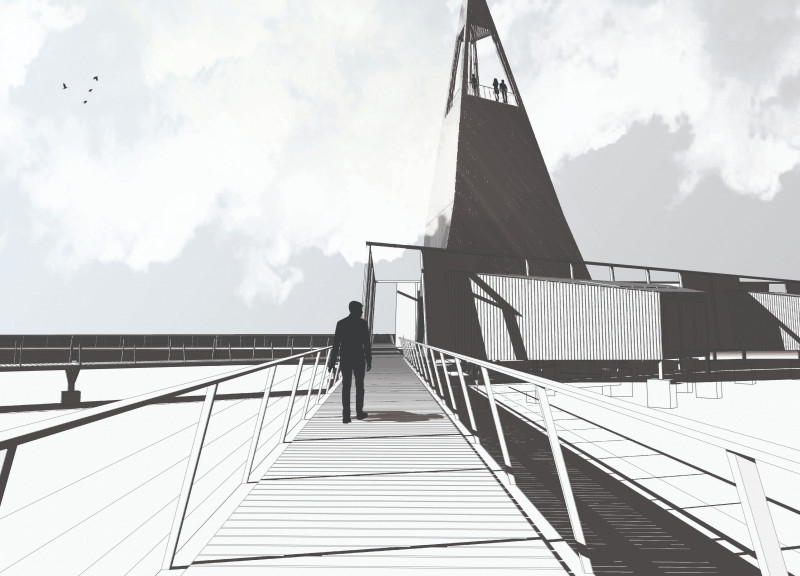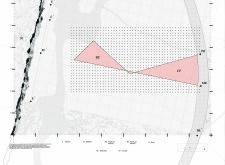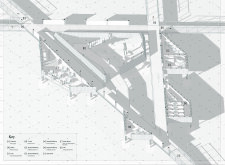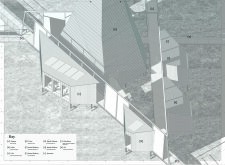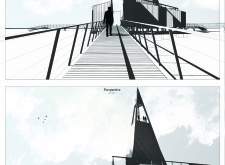5 key facts about this project
The architectural design is set within a varied landscape shaped by a natural fault line, creating a distinct backdrop for the buildings. The overall design revolves around a grid system that organizes the site into functional areas. Pathways connect these spaces, enhancing interaction among users and ensuring easy movement throughout the area. The intention is to blend public amenities with the natural environment, providing a welcoming atmosphere.
Zoning and Site Layout
Two main zones are established: the Build Zone (BZ) and the Car Park (CP). The BZ contains a tower and several facilities meant for public use, while the CP offers parking access, ensuring vehicles do not disrupt the overall flow of the site. This careful zoning allows smooth movement and interaction between the built environment and its surroundings.
Spatial Strategies
The design incorporates three spatial strategies: Linear, Cluster, and a combination of both. The Linear strategy creates straightforward pathways for users, while the Cluster strategy encourages movement through circular arrangements. Blending these approaches leads to a layout that effectively meets a variety of user needs, improving the overall experience within the space.
Material Selection and Construction
The materials chosen for this design include steel columns and aluminum channels, which form the main structural elements. Charred timber planks are used for cladding, providing both a natural look and sustainability. The construction method includes minimal concrete foundations along with a central steel core, which supports the lightweight steel frame that rises to the top of the tower.
Vertical Circulation
A noteworthy feature is the staircase that wraps around the central core, allowing users to easily move between levels. This design element also leads to a viewing gallery at the top, where visitors can enjoy wide views of the surrounding landscape. It serves not only as a way to navigate the building, but also invites interaction with the natural features nearby, highlighting the distinct character of the site.


